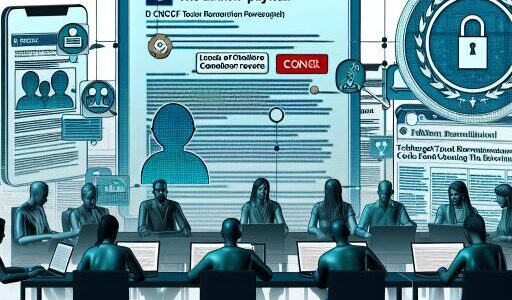Near-miss Cyberattack Worries Officials, Tech Industry
In a startling revelation that has since sent shockwaves through the tech community, an anomaly detected by a vigilant software developer, who is part of Microsoft’s team in California, has spotlighted a significant vulnerability within the digital safety net that guards millions of servers worldwide. The incident put the spotlight back on the critical issue of open-source software security, a domain reliant on the collective goodwill and expertise of developers worldwide, many of whom volunteer their skills without compensation.
The drama unfolded when the developer, during routine performance evaluations, stumbled upon an irregularity in XZ Utils, an under-the-radar but widely utilized open-source program. This software, essential for compressing files on the Linux operating system, was at the brink of being compromised from within. An update intended for broad release had been tampered with, embedding a nearly undetectable backdoor that threatened to fling open the gates to a multitude of servers globally to potential malicious activities. The implications of such a breach could have been catastrophic, signaling a digital security crisis of unprecedented scale.
The root of this sabotage traced back to a new collaborator, introduced under circumstances that now seem laced with foreboding. With the project’s long-time custodian battling personal challenges and expressing intentions to collaborate privately with a newcomer, the stage was set for a stealthy and audacious act of cyber subterfuge. This new developer, adopting a mantle of contribution and trust, initiated a series of commits that concealed a sinister agenda beneath the veneer of routine improvements and bug fixes.
Experts, delving into the commit logs with forensic precision, have unveiled a narrative of deceit where the supposed volunteer was planting the seeds of a digital espionage tool. The anonymity of this individual, coupled with the lack of tangible leads on their identity or motives, has propelled the community into a realm of speculation about the true forces at play behind this nefarious act. The prevailing theory suggests a facade erected by a sophisticated cadre of hackers, possibly under the directive of a national intelligence agency.
The potential disaster was averted thanks to the developer’s acute observation of an unusual spike in processing demand during what should have been routine operations. This anomaly, acting as the thread that unraveled the scheme, highlights the precarious balance on which digital security teeters. It underscored the serendipity of discovery in a sea of code where malicious needles hide in seemingly benign haystacks.
The revelation has sent ripples through the open-source community, a collective that prides itself on transparency and collaboration but now finds itself in the crosshairs of entities wielding considerable resources and sinister intent. The psychological toll of such a realization—of being preyed upon by wolves in sheep’s clothing—has been profound. It underscores a shifting paradigm where the erstwhile benign ecosystem of open-source development is now a battleground of digital espionage.
For policy makers and guardians of national cyber infrastructure, the incident serves as a clarion call. The imperative to fortify the defenses of open-source software against such insidious threats has never been more urgent, with calls to action resonating in the corridors of power. The dialogue around safeguarding these communal digital resources is gaining momentum, signaling an impending pivot in strategy to shield the open-source ethos from exploitation.
In the aftermath of this narrow escape, a consensus is emerging: the vulnerability exposed by this incident cannot be a footnote in the annals of cybersecurity. It marks a critical juncture that demands a collective response—a reimagining of how open-source software is protected, to ensure that the backbone of the internet economy remains robust against the shadowy threats that lurk in the digital age.









